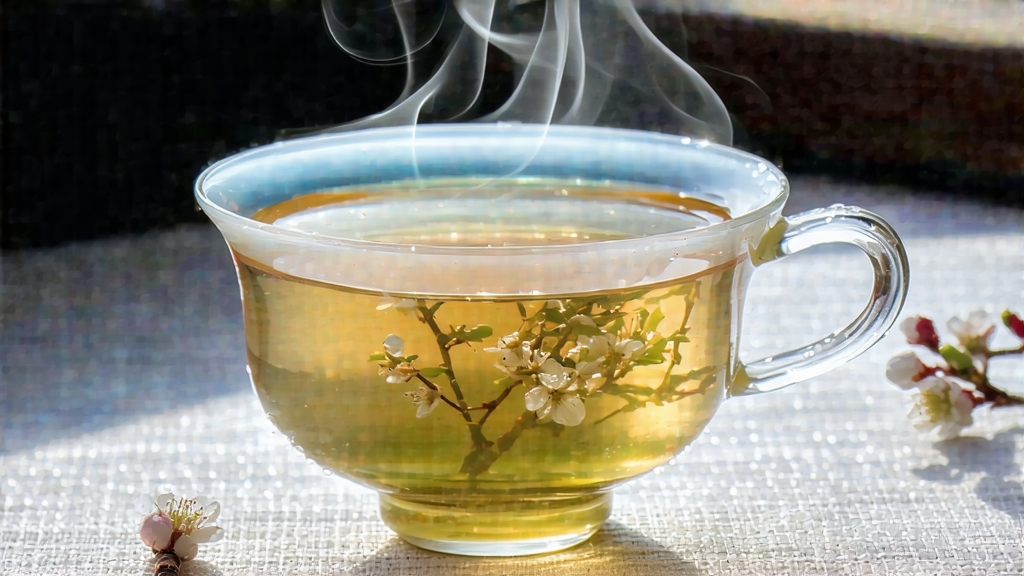
White tea is the most minimally treated of all China’s six great tea families, and within that quiet realm Bai Hao Yin Zhen—literally “White-Hair Silver Needle”—sits like a solitary moon at mid-heaven: luminous, weightless, and seemingly eternal. To the uninitiated it can look almost too delicate to be tea; to the initiated it is the distilled essence of spring itself, a sip of mist rising off the Tai Lao Mountains before dawn. This essay invites the international reader into the hushed world of Silver Needle, tracing its 220-year documented history, its micro-terroirs, its deceptively simple craft, and the ritual choreography that coaxes its subtlest perfumes into the cup.
-
Historical silhouette
The first verifiable record of bud-only white tea appears in a 1796 county gazette from Fuding, Fujian, where local officials offered “small white” as tribute. By 1857 the Da Bai (Big White) cultivar had been selected for its oversized, down-coated buds; once steamed, then sun-withered, the buds kept their silver pile and brewed a liquor so pale it resembled rice-washing water—hence the nickname “rice-water needle.” Export began in the 1890s through Fuzhou’s foreign concessions, and Silver Needle became one of the highest-priced teas on the London market, outselling many Keemun lots ounce for ounce. The 20th-century wars disrupted gardens, but the 1960s state renaissance restored old groves; in 2008 Silver Needle became the official State Banquet tea served to G-20 leaders in Hangzhou, cementing its diplomatic prestige. -
Terroir and cultivar nuance
Authentic Silver Needle is bud-only, plucked before Qingming when the bud is still closed like a grain of rice, and it must hail either from Fuding or neighboring Zhenghe county. Fuding’s coastal climate—morning fog, afternoon sea breeze, granitic sandy loam—yields needles that are plump, silvery-green, and high in amino acids; Zhenghe, slightly higher and more continental, produces slimmer, greyer buds with slower withering and therefore deeper, hay-like aromatics. Purists speak of “south-needle” vs “north-needle” the way Burgundy lovers contrast Côte de Nuits with Côte de Beaune. Within Fuding itself, the villages of Guan Yang, Pan Xi and Tai Mu command premium micro-lots; elevation (300–800 m), proximity to bamboo groves (whose exhaled moisture moderates withering), and age of the mother bushes (some pre-date 1920) all imprint subtle signatures. -
Craft: the art of doing almost nothing
After dawn plucking into bamboo baskets, the buds are spread 2–3 cm thick on water-woven bamboo trays and left outdoors for the first 4–6 hours, depending on humidity. This “green-out” phase allows grassy aldehydes to volatilize. They are then moved into shaded, cross-ventilated withering rooms where temperature is kept at 22–26 °C and relative humidity around 65 %. No rolling, no pan-firing, no shaking—only time and air. Master tea makers gauge readiness by the “three-finger pinch”: a bud should snap, not bend, and the down should feel cool and silky, no longer damp. Total withering lasts 36–48 hours, after which a 15-minute 40 °C oven finish halts oxidation at 5–8 %. The goal is to preserve the bud’s living enzymes while reducing moisture to 5 %, locking in a chamomile-sweet precursor that will later bloom in the cup. -
Grading and aging
Unlike green tea, Silver Needle is one of the few teas that improve with controlled aging. Buds are graded by length (≥2.5 cm), intactness of the tip, and percentage of silver (≥90 % down coverage). Top-grade lots are sun-dried an extra day, yielding a faint coconut note. After vacuum sealing and one year of “quiet rest,” amino acids convert into richer peptides; after five years the liquor darkens to antique gold and develops date and marzipan notes; after ten years a faint Chinese-herbal “coolness” emerges, prized by Guangzhou collectors who pay multiples of the fresh price. -
Brewing: precision in gentleness